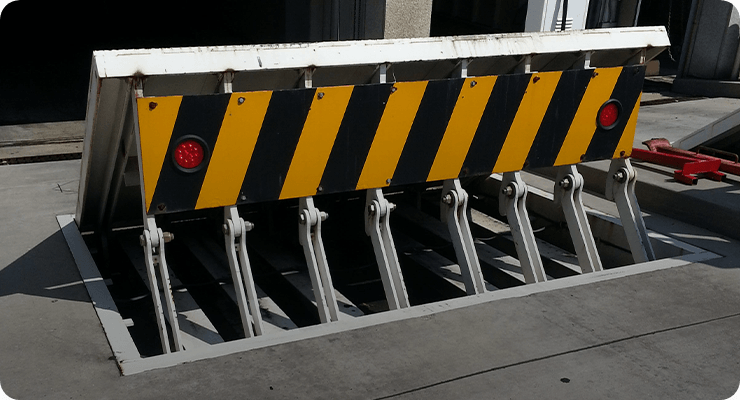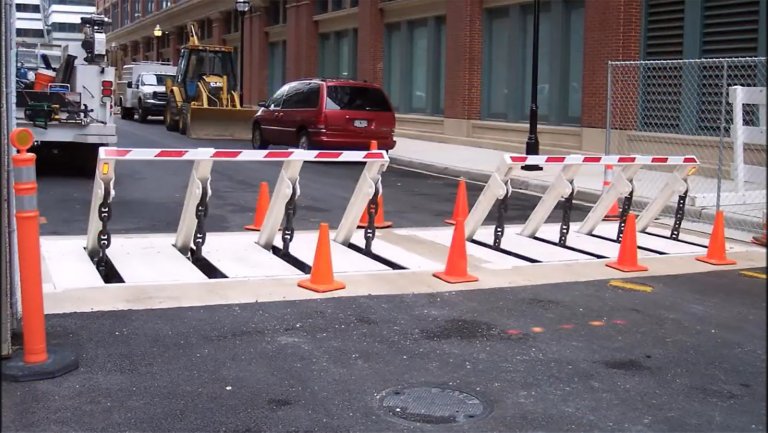Some Ideas on Wedge Barriers You Should Know

The Basic Principles Of Wedge Barriers
The continuing to be pressure used to
the cam webcam deploy release wedge plate 16 may might provided given an electromechanical actuator 84 or other various other. The springtime setting up 54 and the actuator 84(e. Wedge Barriers. g., electromechanical actuator)may operate with each other to convert the camera and raise the wedge plate 16.
As mentioned above, the spring setting up 54 exerts a constant force on the webcam, while the electromechanical actuator might be regulated to put in a variable pressure on the web cam, thereby allowing the lifting and lowering( i. e., deploying and withdrawing )of the wedge plate 16. In certain personifications, the consistent force used by the spring setting up 54 may be adjustable. g., electromechanical actuator) is impaired. As will certainly be valued, the springtime setting up 54 may be covered and shielded from particles or various other components by a cover plate(e. g., cover plate 68 displayed in FIG. 4) that might be significantly flush with the raised surface area 38 of the foundation 14. As pointed out over, in the released setting, the wedge plate 16 offers to obstruct accessibility or travel beyond the obstacle 10. The obstacle 10(e. g., the wedge plate 16 )might obstruct pedestrians or lorries from accessing a home or pathway. As reviewed over, the obstacle 10 is attached to the anchor 30 protected within the foundation 14,

front braces 71. As a result, the link settings up 72 may pivot and turn to allow the collapse and extension of the linkage assemblies 72 throughout retraction and release of the bather 10. The link assemblies 72 reason activity of the wedge plate 16 to be limited. For example, if a lorry is traveling in the direction of the released wedge plate 16(e. For instance, in one scenario, the safety legs 86 might be extended duringmaintenance of the barrier 10. When the safety legs 86 are released, the security legs 86 support the weight of the wedge plate 16 versus the surface 12. Therefore, the lifting device 50 might be deactivated, serviced, removed, replaced, etc. FIG. 5 is partial viewpoint sight of a personification of the surface-mounted wedge-style barrier 10, highlighting the camera 80 and the cam surface right here areas 82 of the lifting device 50. Specifically, 2 webcam surfaces 82, which are referred to as lower cam surfaces 83, are positioned listed below the web cam 80. The lower cam surface areas 83 might be repaired to the surface area 12 (e. As an example, the reduced web cam surface areas 83 and the mounting plate 85 might form a solitary item that is secured to the support 30 by bolts or various other mechanical fasteners. Furthermore, two webcam surface areas 82, which are referred to as upper webcam surface areas 87, are placed above the camera 80 and paired to (e. In other embodiments, interfering layers or plates might be positioned between the surface 12 and the lower cam surfaces 83 and/or the wedge plate 16 and the upper camera surfaces 87 As mentioned above, the web cam
80 equates along the webcam surfaces 82 when the wedge plate 16 is raised from the retracted position to the deployed placement. Furthermore, as discussed above, the spring setting up 54 (see FIG. 3 )might give a force acting upon the cam 80 in the direction 102 through springtime rod 58, which may reduce the force the electromechanical actuator 84 is required to relate to the cam 80 in order to actuate and raise the wedge plate 16. 1 )to the released setting(see FIG. 4). As revealed, the webcam 80 includes track wheels 104(e. g., rollers), which get in touch with and convert along the camera surface areas 82 throughout operation.